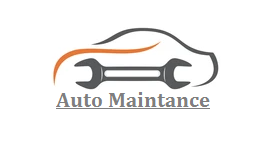Introduction:
In the fast-paced world of fleet management, staying ahead of technological advancements is crucial. Telematics, the integration of telecommunications and informatics, has been a game-changer in this industry. As we step into 2023, a new wave of telematics trends is set to reshape the landscape of fleet management. In this blog post, we’ll explore the current state of telematics technology, anticipate emerging trends, discuss their impact on fleet management, and provide recommendations for future-proofing your operations.
Current State of Telematics Technology:
Before diving into the future, it’s essential to understand where we stand today. Telematics has already revolutionized fleet management by providing real-time data on vehicle location, driver behavior, fuel consumption, and more. The integration of GPS, sensors, and communication technologies has enhanced efficiency, safety, and cost-effectiveness. However, as technology continues to evolve, so do the possibilities for telematics.
Anticipated Trends:
- Connected Vehicles and IoT Integration: The connectivity of vehicles is set to reach new heights with the Internet of Things (IoT). This integration will enable seamless communication between vehicles, infrastructure, and the central fleet management system, enhancing overall efficiency.
- Predictive Maintenance: Predictive analytics will play a pivotal role in minimizing downtime and reducing maintenance costs. Telematics will increasingly be used to monitor vehicle health in real time, allowing for proactive maintenance based on predictive insights.
- Advanced Driver Assistance Systems (ADAS): Telematics will play a crucial role in the implementation of ADAS, contributing to improved safety and reduced accidents. Features such as lane departure warnings, collision detection, and adaptive cruise control will become integral to fleet management.
- Integration with ELD Mandate: Electronic Logging Devices (ELDs) are already a staple in many fleets for tracking hours of service. Telematics will further integrate with ELD systems, ensuring compliance while providing additional data for better decision-making.
Impact on Fleet Management:
The anticipated trends in telematics are poised to have a profound impact on fleet management:
- Operational Efficiency: Connected vehicles and predictive maintenance will contribute to smoother operations, reducing downtime and increasing overall efficiency.
- Safety Enhancement: The integration of ADAS will enhance driver safety, leading to fewer accidents and reducing insurance costs for fleet operators.
- Cost Savings: Predictive maintenance and advanced analytics will lead to significant cost savings by minimizing unexpected breakdowns and optimizing fuel consumption.
Challenges and Opportunities:
However, with great innovation comes challenges:
- Data Security and Privacy: The increased connectivity raises concerns about data security and privacy. Fleet managers must prioritize robust cybersecurity measures.
- Integration Complexity: Integrating new telematics solutions with existing fleet management systems can be complex. Fleet operators should carefully plan and execute the integration process.
Recommendations for Future-Proofing:
To harness the full potential of emerging telematics trends, fleet managers should:
- Invest in Training: Equip your team with the necessary skills to leverage new telematics technologies effectively.
- Prioritize Cybersecurity: Implement robust cybersecurity measures to protect sensitive data from potential threats.
- Collaborate with Technology Providers: Work closely with telematics solution providers to ensure seamless integration and stay informed about the latest advancements.
Conclusion:
The future of fleet management is undoubtedly intertwined with the evolution of telematics technology. By embracing these emerging trends, fleet operators can enhance operational efficiency, improve safety, and realize substantial cost savings. However, success in this dynamic landscape requires careful planning, strategic investments, and a commitment to staying at the forefront of technological advancements. As we navigate the road ahead, the integration of telematics will continue to be a driving force in shaping the future of fleet management.

